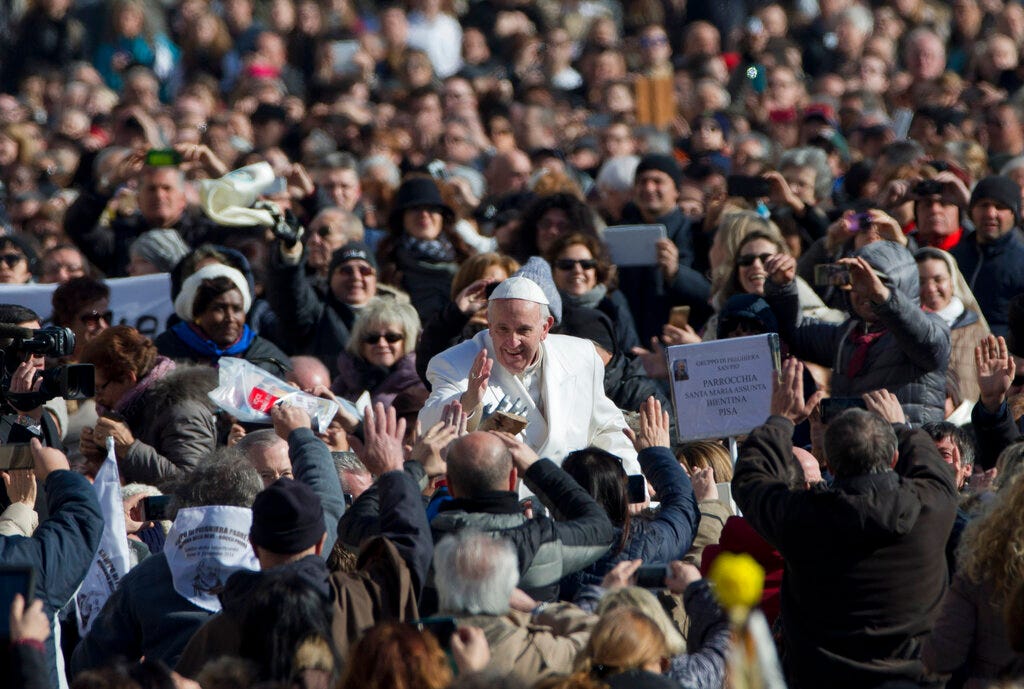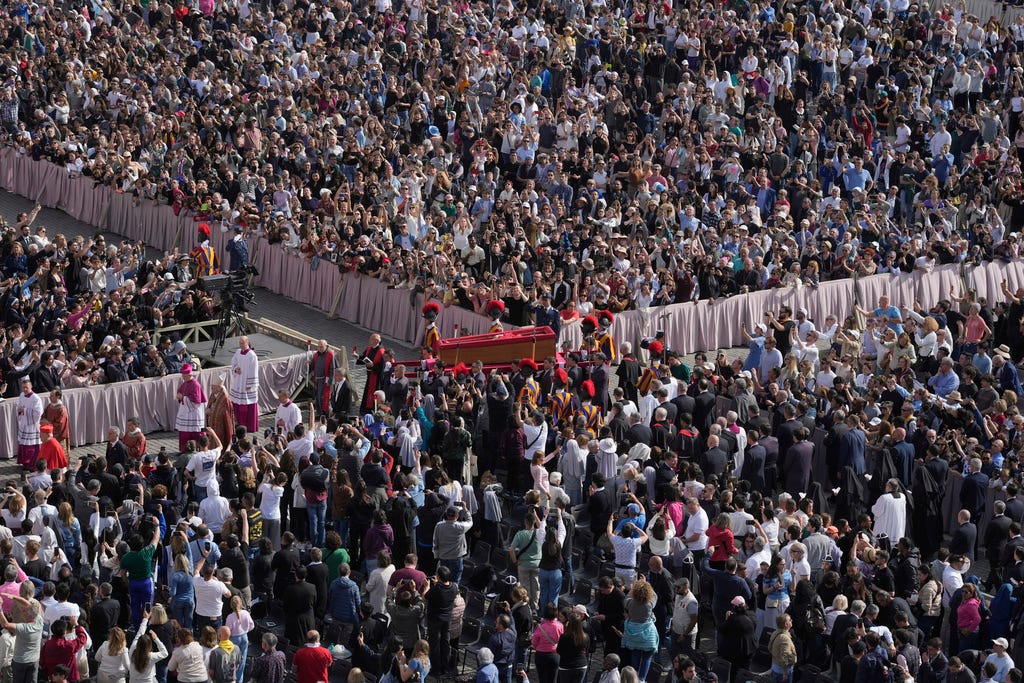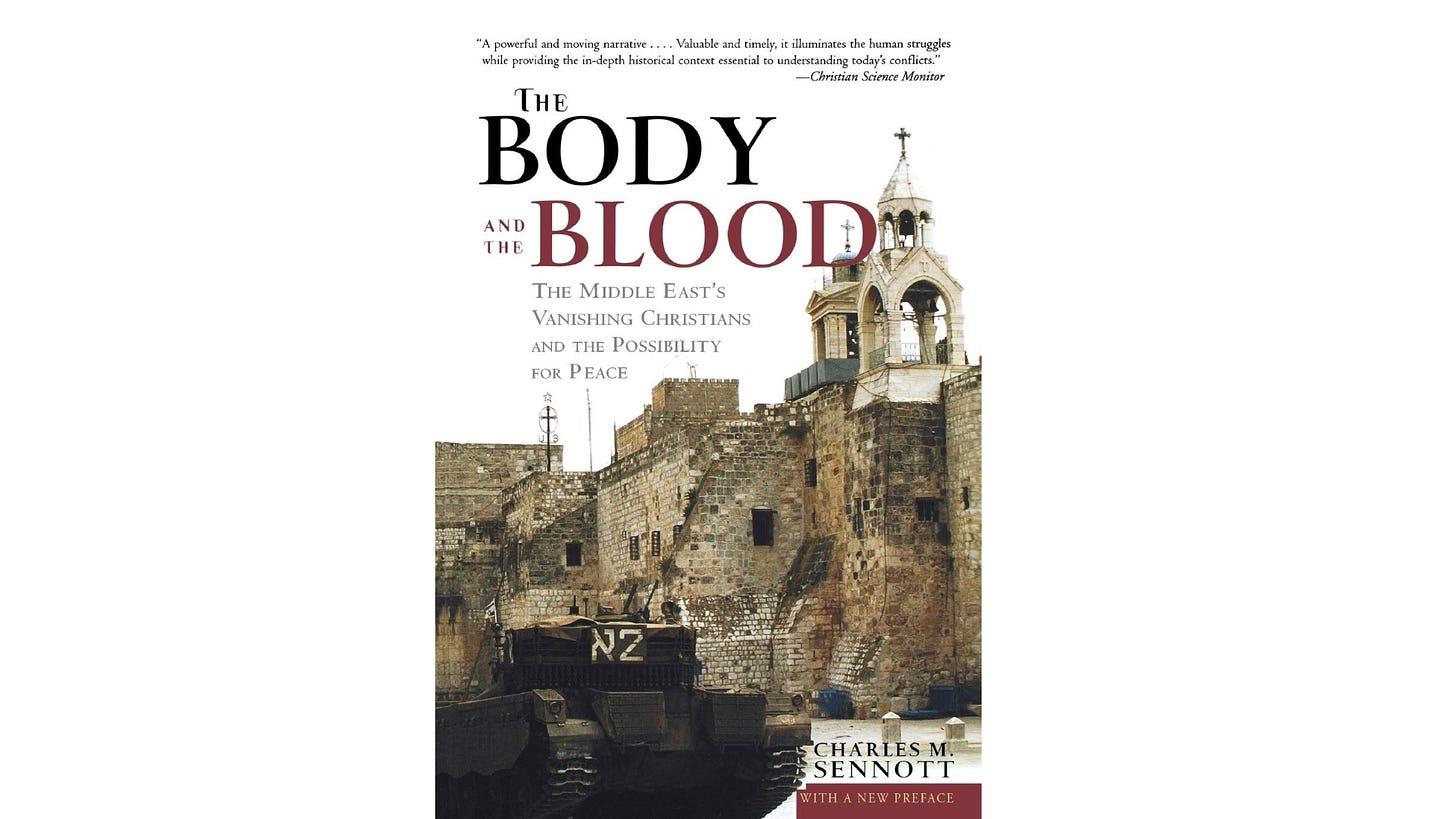After Pope Francis, who will continue his legacy?
In an increasingly cruel world that welcomes authoritarians and rejects migrants, Francis’ message of compassion and charity is at risk of falling on deaf ears.

As Pope Francis lies in state in St. Peter’s Basilica in Rome, the world is left to ponder what it means to have lost such a committed champion for the poor, an advocate for displaced migrants and a voice of compassion in a world that feels increasingly cruel.
With authoritarianism rising in many corners of the world, often fueled by anti-immigrant sentiments, important alliances for peace that governed the post-World War II era collapsing from neglect, and critical streams of international aid from the likes of USAID drying up, the number of refugees and migrants worldwide is on track to increase. By mid 2024, there were 122.6 million forcibly displaced people in the world, according to the UN, and the number is expected to click up 5 percent higher this year.

In the U.S., the mass deportations looming under the Trump administration, coupled with the freezing of federal grants that fund many of the nonprofits that help both documented and undocumented migrants, and the ongoing rhetoric portraying immigrants as dangerous, have created a climate diametrically opposed to the teachings of the Bible: “When a foreigner resides among you in your land, do not mistreat them. The foreigner residing among you must be treated as your native-born. Love them as yourself, for you were foreigners in Egypt,” reads a passage of the book of Leviticus. Notice how the Bible doesn’t ask if foreigners have papers as a condition to love them. After all, Jesus and the Holy Family were internally displaced refugees forced to Bethlehem by an occupier and then forced to flee into Egypt to escape threats of violence.
The pope, whose health had been failing for some time, has watched the rise of autocrats from the Vatican. As his voice of compassion and in favor of what he would call a “pastoral” approach became weaker, he found himself standing more and more alone on the issues that mattered most to him, particularly protecting immigrants and framing the consequences of climate change as a moral issue. With his passing, the next conclave will be a critical juncture for the church and for the world. Sadly, it does not seem there is anyone in the wings who can take up the progressive mantle within the church and fight off the conservative Catholic forces that have been gnashing their teeth and snarling about Pope Francis since he became known as “the people’s pope.”
The progressive leaders who were there for the late Pope Francis’ coronation in 2013, including President Obama and then Vice President Joe Biden, and German Chancellor Angela Merkel and so many other prominent liberals who shared his views on what in Catholic teaching is referred to as Jesus’ “penchant for the poor,” particularly around compassion for immigrants, have all left the world stage. And a new generation of populist, right-wing global leaders, including President Trump, Javier Milei of Argentina and Italy’s right leaning Prime Minister Giorgia Meloni, who have each been decidedly anti-immigrant, are ascendant in their respective countries and are set to attend the funeral Mass in St. Peter’s Square on Saturday.
Hailing from Argentina, Jorge Mario Bergoglio, was the first Latin American to be elected as a pontiff and during his papacy he transformed the Vatican, steering it away from conservative doctrine to a clear preference for the poor in the developing world and serving the dispossessed everywhere.
When he was elected in 2013, Pope Francis said he adopted the name Francis in honor of St. Francis of Assisi, the 13th century Italian friar who renounced his wealth to become “a man of peace, a man of poverty, a man who loved and protected creation,” according to the National Catholic Reporter. Francis’ funeral will be carried out, according to his wishes, with his signature humility and simplicity. He will not be buried alongside previous popes in the grottoes beneath the Vatican, but in accordance with his wishe, he will be laid to rest in the more humble 5th Century Basilica Santa Maria Maggiore.
The conclave that will meet in May to elect a new pope will have to decide if they want to continue with Francis’ reforms and emphasis on social justice, or to revert to a more dogmatic and conservative stance. Their decision will have big consequences, not only for the church, but for those they serve and even for millions of non-Catholics.
With 1.4 billion people who identify as Roman Catholic, the Catholic Church is widely considered to be the largest charitable organization in the world. Through a vast, global network of parishes, religious orders, and charities, the church provides extensive social services on a local and global level, including healthcare, education, and social welfare, impacting tens of millions of people worldwide.
There are two branches of philanthropy in the Catholic Church, Catholic Charities, which is focused on reducing poverty in the U.S., and Catholic Relief Services, which is focused on serving the dispossessed globally. Catholic Relief Services (CRS) has been severely undercut by the Trump administration’s gutting of USAID, which had long helped them to double their efforts around the world. CRS was the largest single recipient of aid from USAID before Trump tasked senior advisor Elon Musk to establish the so-called Department of Government Efficiency which, claiming to address corruption and waste in government spending, has gone about dismantling government programs, and USAID was among the first organizations targeted by DOGE.
The pope consistently expressed his disapproval of the Trump administration’s harsh crackdown on immigration, most recently through a letter to the bishops of the U.S., shortly after Trump announced his mass deportation program: “I have followed closely the major crisis that is taking place in the United States with the initiation of a program of mass deportations. The rightly formed conscience cannot fail to make a critical judgment and express its disagreement with any measure that tacitly or explicitly identifies the illegal status of some migrants with criminality,” wrote Francis.
Now as the Vatican prepares to host the conclave, there will be 135 cardinals who are under the age of 80 and therefore eligible to be among those selected to cast ballots, and 108, a clear majority, were appointed by Pope Francis. So the hope is that the process will elevate a new pope who will share Francis’ liberal leanings and his commitment to helping immigrants in particular. But that hope is far from certain, and those who work with the poorest and most displaced people in the world will be holding their breath over the next weeks.
The world will wait for the white puff of smoke from a chimney above the Sistine Chapel that signifies the burning of the secret ballots, and that a new pope has been selected. Beyond the work on behalf of the poor, the newly elected pope will also face extraordinary challenges in trying to chart a path toward peace in Ukraine, Gaza and more than 50 other countries in conflict, which are tracked by the Council on Foreign Relations.
The road to Emmaus.
It is laden with meaning that Pope Francis’ death fell on this Monday after Easter Sunday with its redemptive and restorative message. Easter Monday on the liturgical calendar is when the reading in The New Testament tells of two of the disciples heading out on the Road to Emmaus, fleeing fears of persecution after Jesus’ crucifixion and the mystery of faith that is the empty tomb. They come across a man in a shroud who walks with them for a while, and they don’t recognize him. When they break bread they realize they are in the true presence of Jesus but by the time they see that, he is gone.
This ancient path from Jerusalem to the village of Emmaus still exists in the West Bank. In researching my book, The Body and The Blood: The Middle East’s Vanishing Christians and the Possibility for Peace, published in 2001, I walked the ancient Roman paving stones on the path referenced in the New Testament. The path leads to a Palestinian village in the West Bank called El-Qubeibeh, where there was still a small but steadily disappearing community of Palestinian Christians who lived around a 14th century Franciscan church named for St. Cleophas. In the book I documented the disappearance of indigenous Christians in the land where the faith began, a steady decline that continues to this day. Like the disciples described in scripture after the death and Resurrection of Jesus, it is hard today to see the physical presence of Jesus on this path in this time of violent upheaval, when the peace process is left in the rubble of Gaza. But Francis’ teaching would encourage us to ponder the idea that Jesus’ presence can still be felt there.
He might point us back to this scripture and ask for quiet reflection around this question: What does the story of Emmaus on Easter Monday tell us about the diminishing presence of Christianity in the Middle East and the role the global Catholic Church can play in calling for — and achieving — justice and peace between Israelis and Palestinians and the followers of the three Abrahamic faiths – Judaism, Christianity and Islam – who together share the Holy Land?






Charlie-
Two stories from our travels: We are in Tiberius, on the Sea of Galilee where we meet a young man who is our waiter at a Chinese restaurant. I ask him if he had time for us while we were in town to be interviewed for our podcast, REALTIME SUITCASE. He said he did, and we met the next day at our hotel. One of the most interesting parts of the interview was a story he told about growing up in Bethlehem. He had gone to college at George Mason University in the States, he told us and was trying to develop a ground root collaborative to promote conversations between communities.
But in grade school he shared a memory of a class he had where the teacher went around the room of about 40 students and inquired about how they thought of themselves in relation to their national identity. He said he was a non-believing Palestinian Israeli, but as the teacher went around the room there were forty different configurations of how the other kids saw themselves. Jewish Israeli, Arab Israeli, Muslim Israeli, Bahia Israeli,Palestinian Christian, Christian Israeli the list continued on and on. The level of diversity was remarkable in the telling but also that it inspired him to pursue bridging those gaps by studying international relations.
The other story was when we were in Alexandria, Egypt. We had gone therefrom Cairo, accompanied by a bodyguard, a driver and a third guy, a body guard for the bodyguard. We arrived and planned the trip with our destination being the "new" library. The next day, we went down in the elevator and as we were in the lobby getting money from an ATM, a huge explosion occurred sending both Nicole and I to the ground, where I jumped over her body, shielding her as huge billows of grey smoke filled the entranceway of the interior of the lobby. A bit of shock and confusion followed and in moments like those you are pressed, as you probably know, to think of the safest next step.
Stairway? Elevator? Earthquake?
We entered into the elevator, and went back up to our floor. As we exited two elderly Muslim people, husband and wife, were slowly moving towards the elevator. We told them it was not safe to go down stairs now and best to return to your room, which is what we did.
It was the presidential Election, and El Sisis' twenty floor campaign portrait hung on banners everywhere.
We would learn that the Muslim Brotherhood had targeted El Sisi's Defense Minister and his entourage by igniting a car bomb about twenty five yard from that ATM machine. None of the Ministers nor their team were killed. But the next day, (Election Day, when the only opposition candidate had just the day before exited his campaign leaving an uncontested ballot) we set off to the library. Later we learned that 6 of the Muslim brotherhood were killed in a retaliation.
The Library is a wonderful place, with galleries in addition to the architectural marvel of the cascading stacks, even the multilingual inscriptions carved out of the exterior stonework. Inside, we ventured to the Arts Section, and by chance the first two books we found featured some of our work (profiled in a French edition)-- we weren't searching for them. Still. Small world, yet again.
It was time to leave, and we asked one of the librarians we had been chatting with if he could call our hotel and have them send us their car, which they had offered to do. I handed him the hotel's card, and he looked at me and said: 'Oooh-- how was yesterday?' I offered: "Grave," and he cut me off-- "You don't have to tell me...that is MY neighborhood." Deaf Ears indeed.
Then he gave me a sorrowful, elegiac look I will never forget.
"We are trying SOooo hard...," he said wistfully.